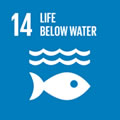Por favor, use este identificador para citar o enlazar a este item:
http://hdl.handle.net/10261/351821COMPARTIR / EXPORTAR:
 SHARE SHARE
 CORE
BASE CORE
BASE
|
|
| Visualizar otros formatos: MARC | Dublin Core | RDF | ORE | MODS | METS | DIDL | DATACITE | |

| Título: | Size at Sexual Maturity of Deep-Sea Unexploited Caribbean Metanephrops binghami (Boone, 1927) and Overexploited Mediterranean Nephrops norvegicus (Linnaeus, 1758) Using Morphometric and Gonadal Staging Approaches |
Autor: | Paramo, Jorge; Rodríguez, Alfredo; Quevedo Zabala, Juliana; Company, Joan B. CSIC ORCID ; Pérez, Daniel; Vigo Fernandez, María CSIC ORCID ; Santos-Bethencourt, Ricardo CSIC ORCID ; Aguzzi, Jacopo CSIC ORCID ; Bahamon, Nixon CSIC ORCID | Palabras clave: | Deep-sea lobsters Management Morphometry Maturity Nephropidae |
Fecha de publicación: | feb-2024 | Editor: | Multidisciplinary Digital Publishing Institute | Citación: | Fishes 9(3): 78 (2024) | Resumen: | The deep-sea Caribbean lobster (Metanephrops binghami) and the Norway lobster (Nephrops norvegicus) are Nephropidae species of high commercial interest. Although the first one still remains unexploited, the second is overexploited in the Mediterranean Sea. For effective fisheries management, size at sexual maturity is an essential indicator to protect immature individuals from exploitation. The estimation of this indicator can, however, be biased due to the difficulty of differentiating juveniles from adults by their size structure due to the natural process of molting. This study aims to estimate the size at sexual maturity of M. binghami and N. norvegicus females by comparing the effectiveness of the morphometric method versus the macroscopic evaluation of gonad maturity. Samples of M. binghami were collected from the Colombian Caribbean Sea in August and December 2009, March and May 2010, and August 2020 to May 2021. Samples of N. norvegicus were collected from the northwestern Mediterranean Sea from 2019 to 2022. Similar sizes at sexual maturity were found for M. binghami between the morphometric approach (ranging from 28.6 to 33.9 mm cephalothorax length, CL) and the gonadal staging approach (31.4 mm CL). Conversely, for N. norvegicus, the morphometric approach yielded higher measurements (between 27.2 and 30.4 mm CL) than the gonadal approach (26.0 mm CL). This discrepancy might stem from the intense fishing overexploitation conditions of N. norvergicus, leading to a physiological adaptation that enables earlier gonadal maturation at faster rates than morphometric adaptation. Further research is required to elucidate these discrepancies and the effect of overexploitation on physiological (i.e., mature gonads) and functional maturity (i.e., capacity to brood eggs at a larger size) | Descripción: | 16 pages, 6 figures, 3 tables.-- Data Availability Statement: Data will be made available on request | Versión del editor: | https://doi.org/10.3390/fishes9030078 | URI: | http://hdl.handle.net/10261/351821 | DOI: | 10.3390/fishes9030078 | E-ISSN: | 2410-3888 |
| Aparece en las colecciones: | (ICM) Artículos |
Ficheros en este ítem:
| Fichero | Descripción | Tamaño | Formato | |
|---|---|---|---|---|
| Paramo_et_al_2024.pdf | 4,45 MB | Adobe PDF | Visualizar/Abrir |
CORE Recommender
Page view(s)
21
checked on 12-may-2024
Download(s)
7
checked on 12-may-2024
Google ScholarTM
Check
Altmetric
Altmetric
Este item está licenciado bajo una Licencia Creative Commons



